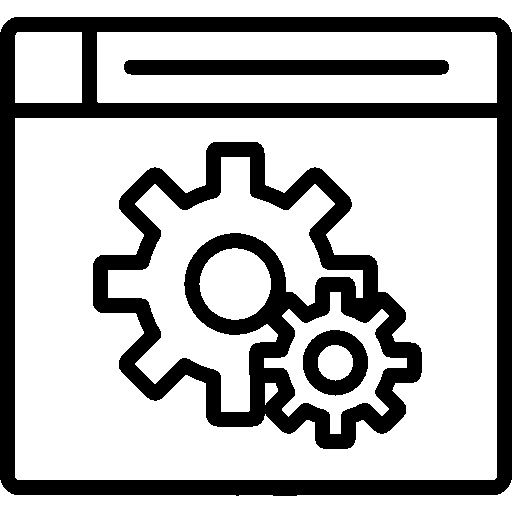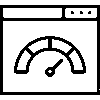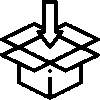- Products
- Platform
- Solutions
- Customers
- Support
- Pricing
 Website & Mobile & E-commerce
Website & Mobile & E-commerce
 CRM
CRM
 Operation & ERP
Operation & ERP
 Productivity
Productivity
 Support
Support
 Community
Community
 Learn
Learn
Application Support Point

Define roles and manage Entranet users and entitlements. Access user statistics and logs.
- Version History
- Application Features
- User Manual
- FAQ
- Community
User Management
Personnel selection, username and password determination, contact information entry, working time limit determination.
You can edit user information, manage user roles and permissions, and monitor login-logout information.
You can assign specific roles to users.
You can assign access permissions to specific modules.
Security and Access Controls
By setting password rules (8-20 characters, uppercase and lowercase letters, numbers and special characters required), you can require periodic password changes.
You can restrict users' access to certain modules.
Time Management and Working Hours
You can enable users to log into the system at certain times.
You can determine working days, start and end times.
User Information and Tracking
You can track users' entry and exit information to the system.
You can log user activities and track transaction history.
You can monitor access information of external users to the system.
Users Application Home Page
This is the login screen of the Users application.

Active Users Page
This is the screen where information about the personnel active in the company is displayed.
 .
.
On the users page, User Name / Company / Department / Position, Role, Authority Percentage, Mobile, License, Leave Date information are listed in a table.
Inactive Users Page
This is the screen where information about inactive personnel in the company is displayed.

On the Passive users page, User Name / Company / Department / Position, Role, Authority Percentage, Mobile, License, Leave Date information are listed in a table.
Deleted Users Page
This is the screen where information about deleted personnel in the company is displayed.

On the deleted users screen, User Name / Company / Department / Position, Role, Authority Percentage, Mobile, License, Registration Date information are listed in a table.
User Roles
This is the screen where the roles defined to the users are displayed.

On the Roles screen, Title, Status, and Number of Users information are listed in a table.
The role is defined by pressing the add new button.

Title to describe the role. Situation; Active/Passive, Sequence information is entered and saved.
User Authorizations
This is the screen where user permissions are displayed. User empowerment ensures a clear distribution of tasks and responsibilities.

To edit user permissions, edit is made by pressing the edit bar.
User Licenses
User licenses refer to the licenses billed to you.

On the User Licenses screen, Price, Period, Expiration, Phase, and Remaining Days information are listed in a table.
User's Login and Logout Information
This is the screen where the user's login and logout information is displayed. Entry and exit information; It is divided into three groups: User Based Chronological and IP Addresses.
User Based Login – Logout Information

User-Based Login - Logout Information List screen includes User Name, IP Address, Last Login Date, Last Online Time, Duration Details information. By clicking on the user, detailed IP Address, Login, Last Online Time, Duration information can be accessed.
Chronologically Based Entry – Exit Information
Entry - Exit information is displayed chronologically.

The Chronological Login - Logout information screen includes User Name, IP Address, Login Date, Last Online Date, Duration information.
IP Addresses Login - Logout Information

IP Address, Tag Name, Number of Successful Logins, Number of Failed Logins, Add (Change) Label, Tag Transactions information are included on the IP Addresses Based Login – Login information screen. Add (Change) Tag and Tag Transactions are updated.
External User Logins
This is the screen where external user logins are displayed.

The External User Logins screen includes Management Company, User, Local User, Request Time and Status information.
Entranet Support User
Entranet User provides remote access to the system to provide support regarding installation, adjustments-configurations and usage. Optionally, this user can deactivate it.

Filtering
Filtreleme, uygulamada belirli kriterlere göre verileri listelemek için kullanılır. Kullanıcıya yalnızca ilgili veya uygun verileri sunmaya yardımcı olur.

Filtreleme sayfasında Tarih Aralığı, Firmalar, Kullanıcı, Etiket, Tümü, Başarılı Girişler, Başarısız Girişler alanları seçilerek filtreleme yapılır. Sıralama; Giriş Tarihi, Son Online Olma, Kullanıcı Adı, Firma Adı veya Çevrim içi Süresi seçilerek kayıtlar sıralanır.
Örnekte giriş çıkış bilgileri - kronolojik menüsündeki filtre gösterilmiştir.
Aktif Kullanıcılar

Aktif Kullanıcılar Filtreleme sayfasında Firma, Departman, Pozisyon ve Roller seçilerek kayıtlar sıralanır.
Adding a New User Record
This is the screen where user information is added.

To add a new User, Username and Password are entered. When determining a new password, it should be 8-20 characters long. It must contain at least one lowercase letter, one uppercase letter, number and special character. Contact information is entered, User time limit can be used. Once all information is entered, it is saved.
User Information Summary Page
This is the screen where summary information is displayed.

The summary screen includes User Name, Status License Key, E-Mail Address, Mobile Phone, Last Login Date / Last Online, Last Edited / Last Edited, Creation / Creator information.
Edit User Information
This is the screen where user information is edited.

Name and Password on the User Information screen; Username, New Password, New Password (Repeat) Status; Active / Passive, Contact information is edited and saved.
Editing User's Roles
This is the screen organized by the roles defined to the user.

Super User is defined by default. The roles defined via the Roles menu are listed in this field. Appropriate role assignment to the user is made here.
Editing User Permissions
The user's authority varies depending on the application used. Authorizations are divided into three groups: According to Screens, Alphabetical, and Copy Authorizations.
Authorizations According to Screens

Alphabetical

Screens are listed alphabetically.
Copy Authorization

Authorization copying is done by selecting a person.
Mobile Login Settings
A mobile key is created for the user to access via the mobile application. This key must be shared with the user during the mobile application installation. The box is checked for availability in the mobile application. Mobile key is created and saved from the create key button.
Login and Registration Statistics
This is the screen where login and registration statistics are displayed.

On the Login and Registration Statistics screen, the user's login and registration statistics are listed. Last Login Date, Last Online, User IP, Creator, Last Edited, Last Edited information is included.
Entry and Exit Information
This is the screen where the user's login and logout information is displayed.

On the Login - Logout Information screen, User Name, IP Address, Login Date, Last Online Time, Duration information are listed in a table.
Log Records

User Name, Description, Transaction Status and Date information are listed in a table on the log records screen.
Configuring General Settings

Due to security reasons, by activating the mandatory settings to comply with the password rules, it is possible to create passwords that are 8-20 characters long and contain one lowercase, one uppercase letter, numbers and special characters.
With the periodically required password change feature, users can be required to change their passwords at intervals you specify.
A period (month) may be given for the mandatory change.
-
How do I add a user record?
Click on the "Add New" button within the application. A new user can be added from the "Add User Record" screen that opens. After selecting personnel and entering other basic information, your user record is created.
-
How do I edit an existing user record?
To edit a user record, select the relevant user information and click the "Edit" button. You can edit the necessary fields on the "User Record Edit" screen that opens.
-
How can I set working hours for users?
By activating the "Use User Time Limit" feature, you can specify the user's working days, start time and end time. In this way, the user can only log in during the specified time intervals.
-
How do I assign user roles?
You select the relevant user information and click the "Edit" button. From the "User Edit" screen that opens, you can assign the desired role in the "User Roles" field.
-
How can I grant user permissions?
You select the relevant user information and click the "Edit" button. From the "User Edit" screen that opens, you can edit the authorizations according to the screens in the "User Authorizations" field and copy authorizations by selecting a different user.
-
How to secure user password
You can ensure the security of your password by activating the "Must Follow Password Rules" option from the Settings >> General Settings screen. The password must be 8-20 characters long and contain a lowercase letter, an uppercase letter, a number, and a special character. You can also make it mandatory to change your password at certain intervals with the "Require Periodic Password Change" option.
-
Can user activities be tracked?
Yes, select the relevant user information and click the "Edit" button. On the "User Edit" screen that opens, you can monitor users' login-logout records, transaction logs and usage statistics.
-
How do I set password rules?
By activating the "Must Follow Password Rules" option from the General Settings menu, you can ensure that passwords that are 8-20 characters long and contain a lowercase letter, an uppercase letter, a number and a special character are used.
-
What happens if you log in with a password that does not comply with the password rules?
If you select the "Warn on Login to Change Password That Does Not Follow Rules" option, users will receive a warning on the login screen if they do not follow the rules when creating their password.
-
How is the requirement to change password periodically implemented?
With the "Require Password Change Periodically" option, you can make it mandatory for users to change their passwords at the intervals you specify. You can also specify the mandatory change period (in months).
Questions
Ask questions and get answers from other Entranet users.

















